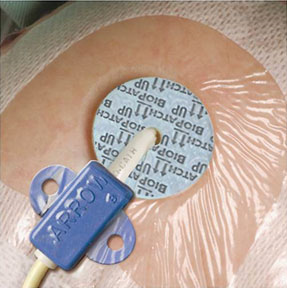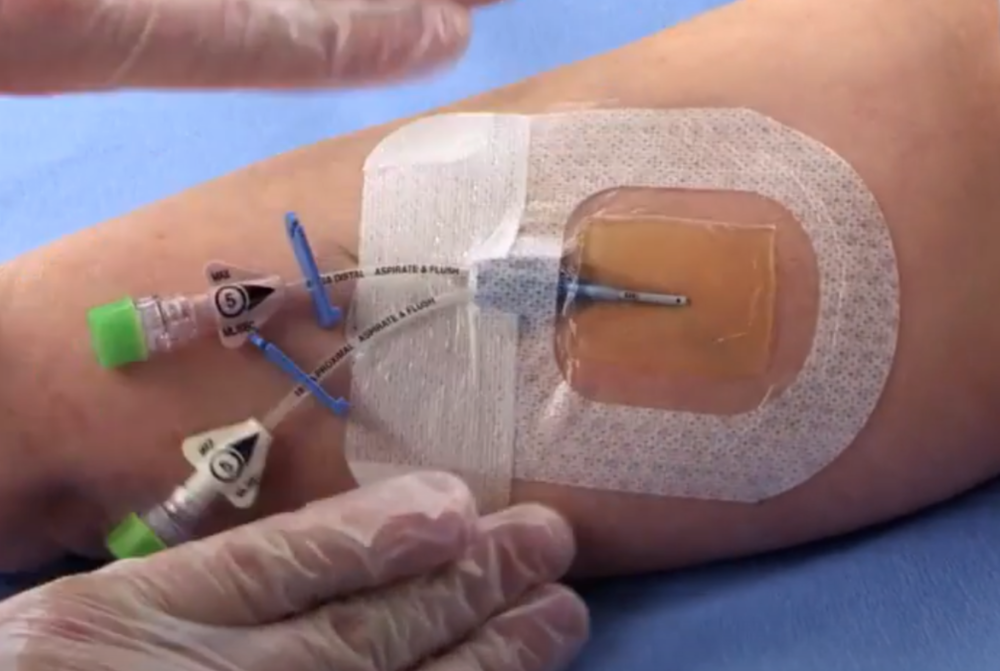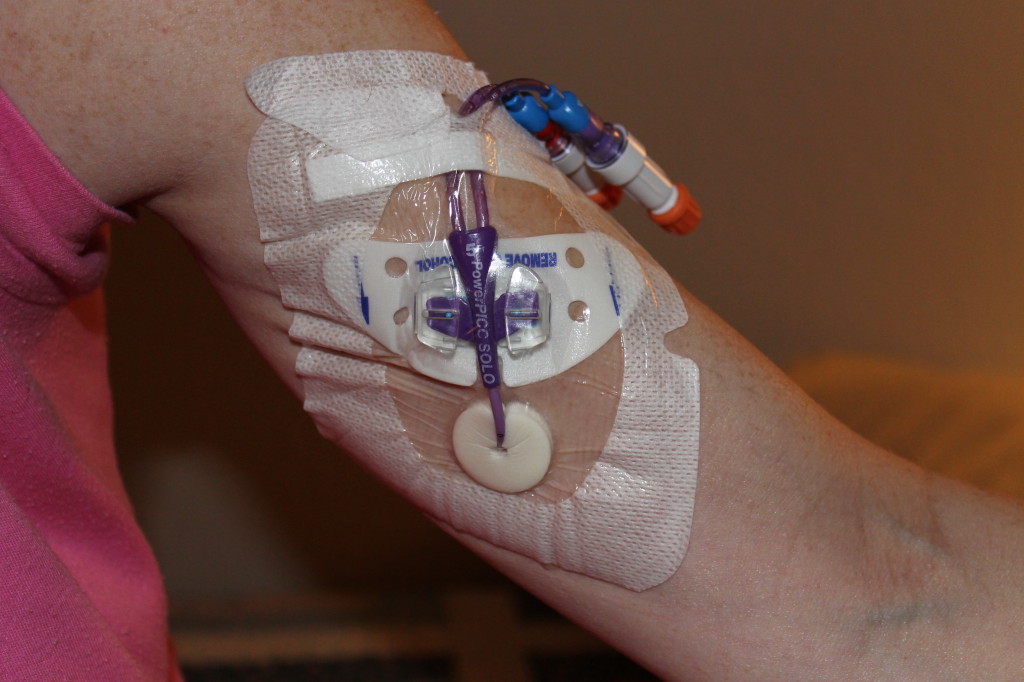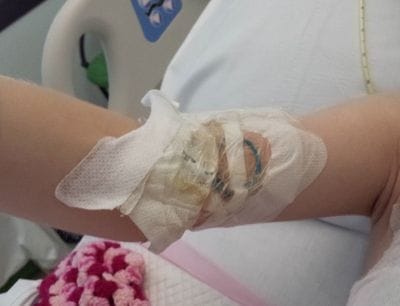central line dressing change how often
Intervention with a shorter interval between changes 2 to 5 days. A peripherally inserted central catheter PICC is a long thin tube that goes into your body through a vein in your upper arm.

Central Line Dressing Change Nursing Skills Youtube
Sas before and after meds.

. Supplies for Clear Cap Change. The ins standard for dressing changes are that gauze dressings that prevent. This is because the risk of CLABSIs increases with the duration of time the catheter is left in place so daily evaluation of central lines is an important aspect of CLABSI prevention.
This includes PICC lines. If a patient has a sensitivity to Tegaderm dressings. 1 Central Venous and Arterial Line Dressing Tray includes chlorhexidine 2 and 70 alcohol swabstick 1 No-sting barrier swab stick CavilonTM 1 Pair sterile gloves 1 Securement device for unsutured lines if required 1 CHG transparent dressing.
Central Line Clear Cap Change and Flushing Instruction Sheet Change all clear caps every 7 days or any time the dressing is changed or if there is any blood in clear cap following flushing. How often is central venous catheter healing done. If at any time the dressing peels becomes wet underneath becomes dirty etc.
If the dressing becomes loose wet or dirty the dressing must be changed more often to prevent infection. Wash your hands with warm soapy water. The studies used a variety of transparent dressings and compared a longer interval between dressing changes 5 to15 days.
Do not disturb or change a clean dry intact dressing until the due date. Allow the site to dry. Groshong picc - flush with 5ccs of 09 normal saline daily.
Central line dressings changes should be done every 7 days or as needed for peeling or soiling. Checklist for Prevention of Central Line Associate Blood Stream Infections. Dry with a clean paper towel.
If the dressing becomes loose dirty or wet change it right away. We classified the time intervals between dressing changes as short 2 - 5 days in the more frequently changed dressings group and long 5-15 days in the less frequently changed group. Moist dressings are breeding grounds for infections.
Picc - flush with 25 cc of heparin 100 unitscc daily. If you have a gauze dressing change it every 2 days. If 22 gauze used after initial insertion under occlusive Tegaderm dressing dressing must be changed in 24 hours.
Changing Your Dressings. A gauze dressing needs to be changed 2 or 3 times a week such as every Monday and Thursday or every Monday Wednesday and Friday. PICC line dressings must be inspected on a daily basis.
Set up your supplies on a clean surface on a new paper towel. No need to fan or blow on the site. Be sure to wash between your fingers and under your nails.
The central venous catheters should be reviewed daily for ongoing need. Masks must be worn when changing clear caps. Peripherally inserted central catheter - dressing change.
According to the most recent CDC Guidelines 1 gauze dressings should be changed every 48 hours and transparent semi-permeable dressings every 7 days or earlier if the integrity of the dressings is compromised or there is blood. Equipment Required for Dressing Change with Central Venous and Arterial Line Dressing Tray. The central line provides a direct path into your bloodstream.
All studies used transparent dressings made of synthetic materials and two studies used gauze a fabric dressing that does not stick to the skin secured with tape when skin was damaged. PICC lines should be changed at least once per week. Central Line Dressing Kit.
CVC Dressing Change Continued Document date and time on dressing. Usually a pack of 3. All components that can be changed extension sets connectors securement devices etc should be changed whenever a dressing change is.
Take your Sureprep Protective Wipe and draw a rectangle around the catheter site. The information below describes the steps for changing the dressing. Must perform these critical elements for successful completion.
Clear caps for each line. Report this to your healthcare provider as soon as possible. How Often are PICC Line Dressings Changed.
Central venous catheters are used very frequently in intensive care units. Wash your hands for 30 seconds with soap and water. This includes gauze under a transparent dressing.
Participants were recruited from the intensive care and cancer care departments of one childrens and four adult hospitals. Daily review of line necessity and replacement. Remove all jewelry from your fingers.
Dressing changes for central lines should occur every 5 to 7 days with a transparent dressing or every two days with a gauze dressing. Also change your dressing right away if it becomes wet loose or dirty. This is important to make sure the dressing seals properly.
Put on a pair of clean gloves. Those dressings are changed every 7 days or if they fail to become occulsive. Implanted port - flush with 25 cc of heparin 100 unitscc daily.
Follow any additional instructions your healthcare provider gives youTo change the dressing you need toIf you have been prescribed a dressing change kit follow the instructions for using supplies in that kitPrepare to change the dressing. Preventing infection while changing the dressing. Of course with Tegaderm dressings they are transparent so you can see the catheter insertion site.
Sterile technique must be maintained to prevent Central-Line Associated Blood Stream Infections CLABSI Nursing Points General. A daily inspection should ensure that the line is properly in place free from infection and in working order. It should be changed immediately.
In each study participants were followed up until the CVAD was removed or until discharge from ICU or hospital. The central line dressings should be changed a minimum of every seven days every 48hr if gauze is used. Intervention with a shorter interval between changes 2 to 5 days.
Routine inspection of the central line regardless of location should be performed daily. The end of this catheter goes into a large vein near your heart. However the evidence supporting these recommendations is limited.
Sash before and after meds. Sash before and after meds. The dressing will not stick well to the chlorhexidine but will stick well to the SurePrep barrier film.
Changing and flushing a central line access cap. At home you will need to change the dressing that protects the catheter site. The studies used a variety of transparent dressings and compared a longer interval between dressing changes 5 to15 days.
In general a clear dressing needs to be changed once a week such as every Monday.

Dressing A Central Line Properly Maimonides Emergency Medicine Residency

5 Key Points Of Effective Biopatch Use Department Of Anesthesiology

Dressing A Central Line Properly Maimonides Emergency Medicine Residency

Picc Dressing Change Peripherally Inserted Central Catheter For Nurses Youtube

Dressing A Central Line Properly Maimonides Emergency Medicine Residency

What Is A Picc Line Infusion Solutions Inc

Pin By Janet Shaw On Motor Skills Nursing Nurse Skills Nursing Videos Nursing Procedures

Central Venous Access Device Dressing Change Nursing Skills Jove

Ten Tips For Dressing And Securement Of Iv Device Wounds

Peripherally Inserted Central Catheter Picc Care Instructions

Central Line Dressing And Cap Changes Youtube

Central Line Dressing Change Nursing Skills Youtube

How Do I Change A Picc Dressing Peripherally Inserted Central Catheter Youtube Home Health Nurse Nurse Hunter Boots

Central Line Dressing Change Kit With Chloraprepdefault Title Central Line Changing Kit Line

Picc Dressing Change Peripherally Inserted Central Catheter For Nurses Youtube

Sterile Dressing Change To Picc Line Nurse Skills Nursing Notes Nurse

Dressing A Central Line Properly Maimonides Emergency Medicine Residency